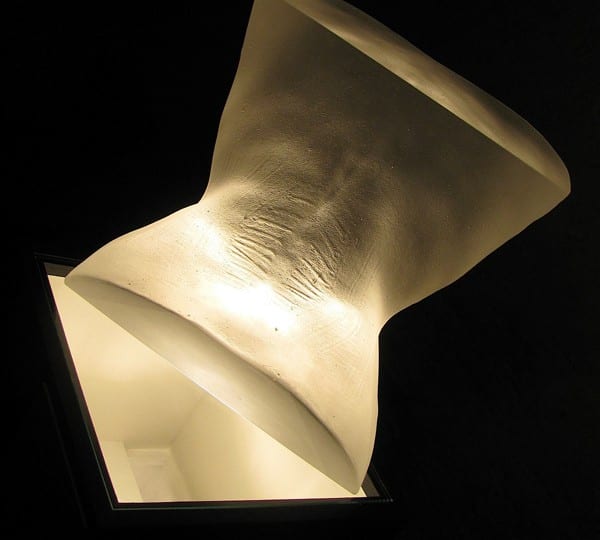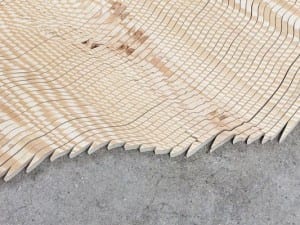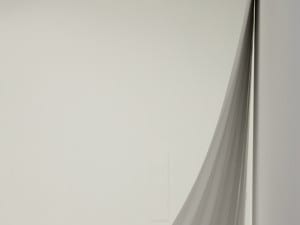Brazilian artist Ilua Hauck da Silva works in a wide variety of media to create subversive and thought-provoking art. Influenced by a strong sense of the relationship between decadence and beauty, her work explores dark aspects of the human condition and explores the notion of vanity in modern life. With an academic background in art history as a Goldsmiths graduate, Ilua’s work evokes themes reminiscent of Greek mythology and biblical texts. Here the Aesthetica Art Prize 2012 longlisted artist discusses inspirations for her work, the importance of competitions for artists and her experience of being included in last year’s Prize and exhibition.
A: As a longlisted Aesthetica Art Prize 2012 artist your work was featured in the exhibition at York St Mary’s last spring. What did you think about the exhibition itself and the other art work on show?
IHS: The juxtaposition of contemporary art and old spaces has interested me since my university days, so I found the exhibition fascinating. What also made the show particularly interesting was that Aesthetica embraced work from artists of all ages and stages of their careers which brought together a wide variety of approaches to contemporary issues. I especially liked shortlisted artist Caroline Jane-Harris intricately cut paper and Mary Humphrey’s Romani pictures – I have also photographed Transylvania extensively, so I could relate to her fascination with the region.
A: Why do you think art prizes are so important for artists, and would you recommend others to enter the Aesthetica Art Prize?
IHS: Prizes are important because they offer the opportunity of exposure, financial gain, and most importantly access to wider aspects of the art world. Competitions also encourage artists to give their best and question their practice, both things that I believe to be vitally important for the development of creative processes. I definitely recommend others to enter Aesthetica Art Prize – it’s a great opportunity to have your work displayed in such a beautiful setting and to gain recognition for your hard work. Also, the fact that the Aesthetica team are incredibly friendly and professional makes the process truly enjoyable.
A: Your piece Veins of Vanity II, which featured in the Aesthetica Art Prize 2012 longlist, focuses on modern attitudes towards vanity. What made you want to explore this theme in your work?
IHS: The idea for Veins of Vanity II began with two fragments of text that made me think about contemporary attitudes towards vanity. The first being a sentence from the book Alive Water by Brazilian author Clarice Lispector, “The violence of your beauty”, and the second the title of a 1978 Blondie song and 1998 ICA exhibition of the same name Die Young, Stay Pretty. Whilst vanity is an intrinsic, negative aspect of the human condition, vanity is often conversely celebrated in this age of celebrity worship where individuals experience pressure to emulate extremely idealised bodies; a discussion of vanity therefore seemed particularly prevalent for today. I could have criticised the vanity of others, their plastic surgeries or retouched photos, but that held the danger of portraying a fascination with luxurious objects one wishes to have. Alternatively, by presenting physical evidence of the destructiveness of vanity on my own body, I hope to inspire the viewer to think about their own vanities (and perhaps inevitably mine) instead of vanity as an abstract concept.
A: You were born in Brazil but have lived and worked in London for a number of years. How have these two cultures inspired you as an artist?
IHS: Aspects of these two cultures continue to inspire me, although I tend to transcend local cultural elements by articulating my artistic discourse as a visual discussion about the human condition. Of course, one could argue that the body of my work entitled In the Name of the Father is inspired by the fact that I grew up in a Catholic country, or that Veins of Vanity II relates to Victorian fashion and is therefore connected to traditional British values. Whilst this is true and an important facet of my work, the meaning of this body of work and indeed of my work in general is much broader. So I would say the way these two cultures inspire me is that some of their particular features enable me to visually discuss existential problems.
A: You work in various types of media, are you most comfortable with one in particular?
IHS: I find glass the most interesting, both technically and aesthetically; I get a real kick out of figuring out technical problems. However, what makes me feel truly comfortable is to use media that perfectly relates to the concept I am dealing with. So if an idea requires paper, metal or silicone, those are the materials I will use. I develop my work from ideas, not from media – I know there are artists who start from experimenting with a particular material, and then find a theme that fits the work they have created, but I am the opposite. I have a clear vision of what I want to make in order to express a concept, and then I begin to think about what medium would suit it best.
A: What can you tell us about your current projects, and will you be entering the Aesthetica Art Prize again this year?
IHS: After showing consistently for fourteen months, I am now focusing on producing a new body of work. Finance, markets and trade are my main sources of inspiration this time. I cannot help feeling sensitised by the financial state we’re currently entrenched in, and arguably how feebly the need for a new global fiscal strategy has been addressed. I hope the pieces will inspire a more positive and ethical attitude towards commerce and wealth. As soon as I have two finished pieces, I will definitely enter the Aesthetica Art Prize again. Hopefully, I will have even more luck than last year!
To enter the Aesthetica Art Prize visit www.aestheticamagazine.com/artprize
Credit
1. Image courtesy of Ilua Hauck da Silva and Aesthetica Magazine.




